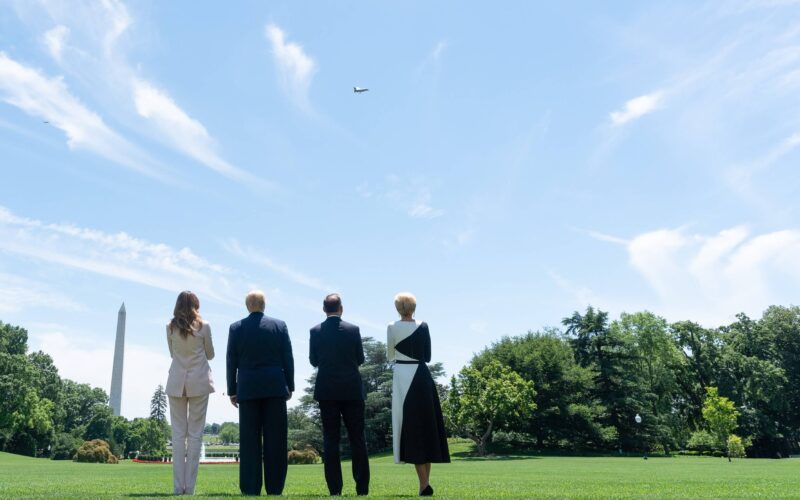President of the United States Donald Trump confirmed Poland’s decision to purchase 32 F-35A fighter jets, as part of a larger deal that will see the U.S. strengthen their defense relationship with the EU member state, as Turkey is about to be phased out of the Joint Strike Fighter program.
Trump confirmed that Poland agreed to purchase “32 […] brand new F-35s at the highest level” during a visit of the country’s Prime Minister Andrzej Duda in the United States, on June 12, 2019.
The total order should amount to around $2.5 billion. Trump also reaffirmed the decision to increase the presence of the United States military in Poland by adding a thousand soldiers on its soil. A squadron of MQ-9 Reaper drones should also be deployed in the country.
The agreement was celebrated with a low fly pass of an F-35 fighter jet over the White House in Washington, before the eyes of the two leaders and their spouses.
An F-35 flies over the White House! pic.twitter.com/MaEIe1abeO
— The White House (@WhiteHouse) June 13, 2019
The prospect of a deal had already been announced by Polish Defense Minister Mariusz Blaszczak on Twitter on May 28, 2019. “Today, we sent a Letter of Request -LOR to our US partners for the purchase of 32 F-35A aircraft and a logistics and training package,” he said, adding that “it is high time to replace the post-Soviet equipment with the most modern fighters!”
One in, one out
Meanwhile, the withdrawal of Turkey from the F-35 program was made official on June 7, 2019. U.S. Under Secretary of Defense Ellen M. Lord declared in a press briefing that, as Ankara was about to take delivery of the S-400 system, the United States “need[s] to begin unwinding Turkey’s participation in the F-35 program.”
However, removing Turkey will likely disrupt the supply chain and lead to delivery delays and additional costs, as several Turkish companies have taken part in the program. For example, Turkish Aerospace Industries is the supplier of Northrop Grumman for the weapon bay doors of the F-35, a core feature. Lord assured that the Pentagon was working “with Lockheed Martin on the aircraft side, with Pratt & Whitney on the engine side, to find alternate sources.”

